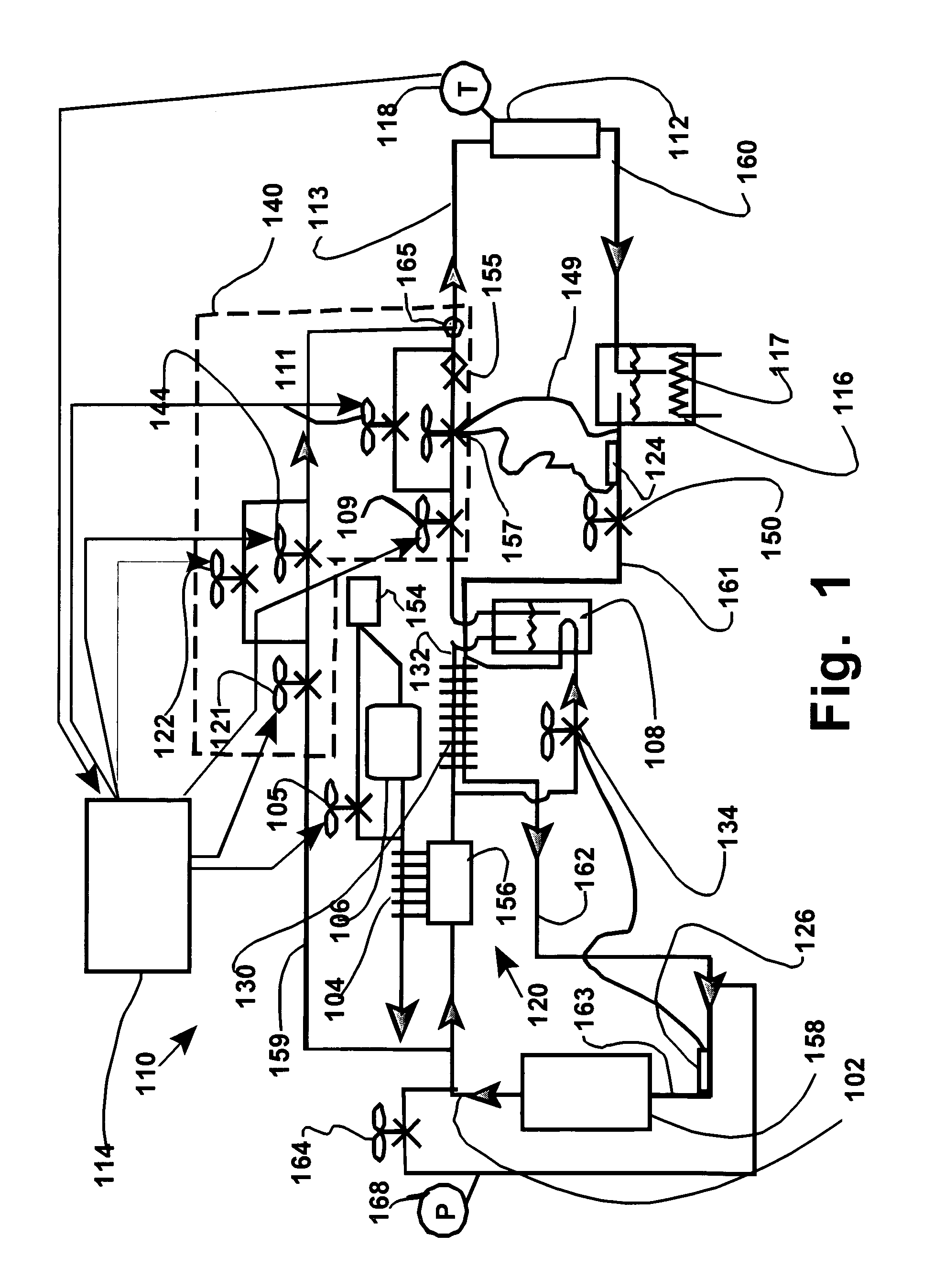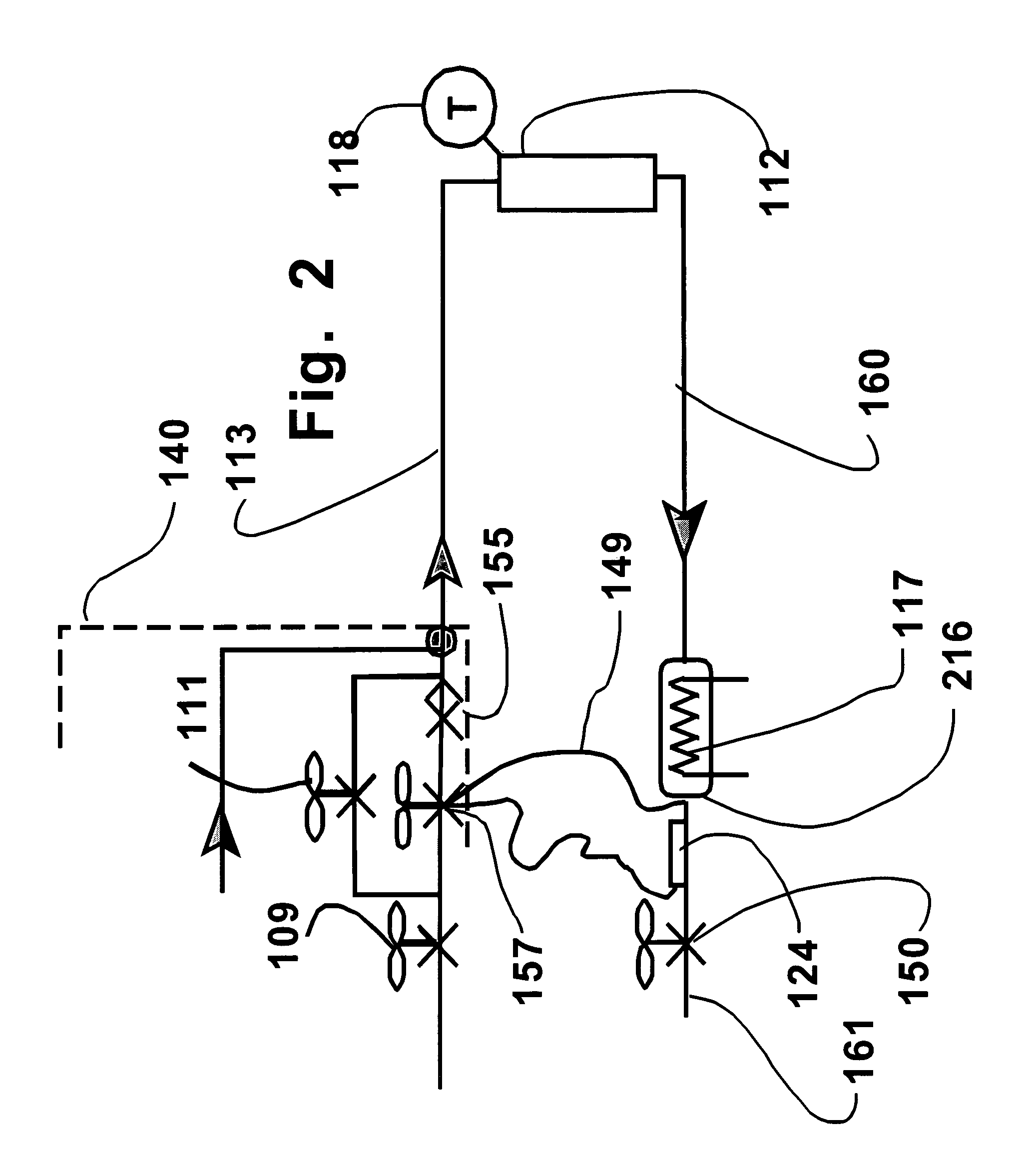Thermal control system and method
a control system and control system technology, applied in the field of thermal control system and method, can solve the problems of limited input pressure of the compressor, and achieve the effects of high thermal efficiency, high speed response, and rapid adjustmen
- Summary
- Abstract
- Description
- Claims
- Application Information
AI Technical Summary
Benefits of technology
Problems solved by technology
Method used
Image
Examples
Embodiment Construction
[0025]A block diagram of a temperature control unit (TCU) 110 is depicted in FIG. 1 for operation principally in the range of approximately −50° C. to +140° C., by way of example only. Other temperature ranges may be utilized, depending upon the refrigerant and to some extent the load, but the example given assumes the use of refrigerant R507 as an example. TCU 110 can be a compact unit and is characterized by low cost as well as moderate size, enhanced economy and rapid response. Temperature levels are to be held stable at different target levels irrespective of the lengths of the lines coupling associated devices. The TCU 110 in this example is intended for the purpose of controlling the temperature of a tool 112, such as a cluster tool for semiconductor fabrication. Such tools have internal passageways for passage of a thermal control fluid. The TCU is intended to establish different target temperatures of the tool for operating cycles during different fabrication steps.
[0026]The...
PUM
 Login to View More
Login to View More Abstract
Description
Claims
Application Information
 Login to View More
Login to View More - R&D
- Intellectual Property
- Life Sciences
- Materials
- Tech Scout
- Unparalleled Data Quality
- Higher Quality Content
- 60% Fewer Hallucinations
Browse by: Latest US Patents, China's latest patents, Technical Efficacy Thesaurus, Application Domain, Technology Topic, Popular Technical Reports.
© 2025 PatSnap. All rights reserved.Legal|Privacy policy|Modern Slavery Act Transparency Statement|Sitemap|About US| Contact US: help@patsnap.com



